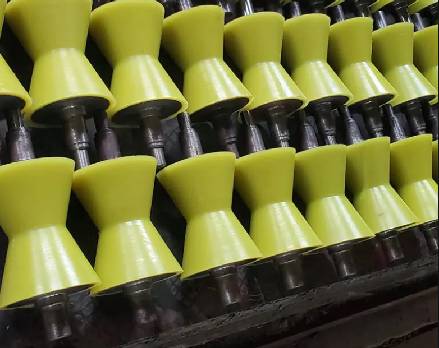 Afrikaans
Afrikaans  Albanian
Albanian  Amharic
Amharic  Arabic
Arabic  Armenian
Armenian  Azerbaijani
Azerbaijani  Basque
Basque  Belarusian
Belarusian  Bengali
Bengali  Bosnian
Bosnian  Bulgarian
Bulgarian  Catalan
Catalan  Cebuano
Cebuano  Corsican
Corsican  Croatian
Croatian  Czech
Czech  Danish
Danish  Dutch
Dutch  English
English  Esperanto
Esperanto  Estonian
Estonian  Finnish
Finnish  French
French  Frisian
Frisian  Galician
Galician  Georgian
Georgian  German
German  Greek
Greek  Gujarati
Gujarati  Haitian Creole
Haitian Creole  hausa
hausa  hawaiian
hawaiian  Hebrew
Hebrew  Hindi
Hindi  Miao
Miao  Hungarian
Hungarian  Icelandic
Icelandic  igbo
igbo  Indonesian
Indonesian  irish
irish  Italian
Italian  Japanese
Japanese  Javanese
Javanese  Kannada
Kannada  kazakh
kazakh  Khmer
Khmer  Rwandese
Rwandese  Korean
Korean  Kurdish
Kurdish  Kyrgyz
Kyrgyz  Lao
Lao  Latin
Latin  Latvian
Latvian  Lithuanian
Lithuanian  Luxembourgish
Luxembourgish  Macedonian
Macedonian  Malgashi
Malgashi  Malay
Malay  Malayalam
Malayalam  Maltese
Maltese  Maori
Maori  Marathi
Marathi  Mongolian
Mongolian  Myanmar
Myanmar  Nepali
Nepali  Norwegian
Norwegian  Norwegian
Norwegian  Occitan
Occitan  Pashto
Pashto  Persian
Persian  Polish
Polish  Portuguese
Portuguese  Punjabi
Punjabi  Romanian
Romanian  Russian
Russian  Samoan
Samoan  Scottish Gaelic
Scottish Gaelic  Serbian
Serbian  Sesotho
Sesotho  Shona
Shona  Sindhi
Sindhi  Sinhala
Sinhala  Slovak
Slovak  Slovenian
Slovenian  Somali
Somali  Spanish
Spanish  Sundanese
Sundanese  Swahili
Swahili  Swedish
Swedish  Tagalog
Tagalog  Tajik
Tajik  Tamil
Tamil  Tatar
Tatar  Telugu
Telugu  Thai
Thai  Turkish
Turkish  Turkmen
Turkmen  Ukrainian
Ukrainian  Urdu
Urdu  Uighur
Uighur  Uzbek
Uzbek  Vietnamese
Vietnamese  Welsh
Welsh  Bantu
Bantu  Yiddish
Yiddish  Yoruba
Yoruba  Zulu
Zulu idler in conveyor belt
The Role of Idlers in Conveyor Belts
Conveyor belts are an integral part of modern material handling systems, playing a crucial role in the movement of goods across various industries. At the heart of these systems lies the idler—a seemingly simple component that is essential for the efficient operation of conveyor belts. Understanding the function and significance of idlers is key to appreciating how conveyor systems work and maintaining their performance.
The Role of Idlers in Conveyor Belts
One of the primary purposes of idlers is to assist in load distribution. When materials are added to the conveyor belt, the weight can cause sagging if the belt is not adequately supported. Idlers positioned at strategic locations ensure that the weight is evenly distributed, preventing excessive strain on any single section of the belt. This load balancing is critical in avoiding potential breakdowns or inefficiencies that can arise from uneven weight distribution.
idler in conveyor belt

Additionally, idlers play a significant role in maintaining the alignment of the conveyor belt. A misaligned belt can lead to a host of problems, including increased friction, material spilling off the belt, and accelerated wear on both the idlers and the belt itself. By supporting the belt and facilitating proper tracking, idlers help to ensure smooth and efficient operation. Regular maintenance and inspection of idlers are essential to keep them in optimal condition and to identify any signs of wear or malfunction before they lead to major issues.
Another important aspect of idlers is their contribution to energy efficiency. When a conveyor belt operates smoothly and without unnecessary friction, it requires less power to move the load. This efficiency translates into reduced energy costs and, consequently, lower operational expenses for businesses. Therefore, investing in high-quality idlers and ensuring their proper maintenance is not just a matter of equipment reliability but also a strategy for cost-effectiveness.
Idlers also have environmental implications. Properly functioning idlers help to minimize material spillage, which can contribute to waste and necessitate additional cleanup measures. Moreover, the energy savings derived from efficient conveyor operation can lead to a smaller carbon footprint for companies relying on conveyor systems.
In conclusion, while idlers may appear to be simple yet unremarkable components of conveyor belts, their significance cannot be overstated. They ensure load distribution, maintain the belt’s alignment, contribute to energy efficiency, and have positive environmental impacts. For industries that rely on conveyor systems—such as mining, manufacturing, and logistics—investing in high-quality idlers and prioritizing their maintenance is imperative for achieving operational excellence. Understanding the role of idlers allows businesses to optimize their material handling processes, reduce costs, and enhance productivity in an increasingly competitive landscape.
-
Revolutionizing Conveyor Reliability with Advanced Rubber Lagging PulleysNewsJul.22,2025
-
Powering Precision and Durability with Expert Manufacturers of Conveyor ComponentsNewsJul.22,2025
-
Optimizing Conveyor Systems with Advanced Conveyor AccessoriesNewsJul.22,2025
-
Maximize Conveyor Efficiency with Quality Conveyor Idler PulleysNewsJul.22,2025
-
Future-Proof Your Conveyor System with High-Performance Polyurethane RollerNewsJul.22,2025
-
Driving Efficiency Forward with Quality Idlers and RollersNewsJul.22,2025





























